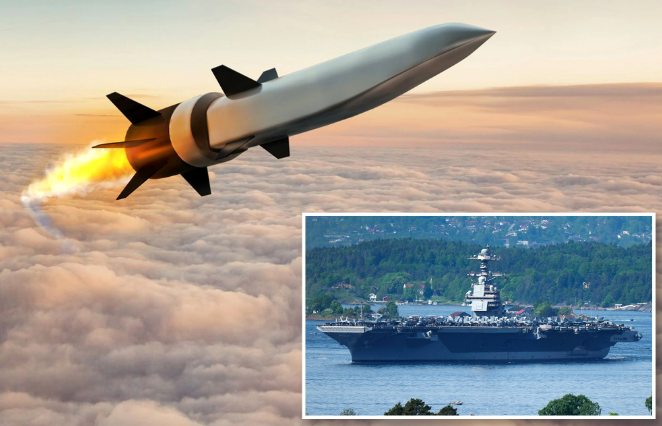China conducted a simulation in which they used hypersonic missiles to destroy the USS Gerald R. Ford, the world’s largest aircraft carrier. The simulation, carried out by Chinese researchers, aimed to demonstrate that the US Navy warship could be effectively eliminated.
By employing a war game simulation system, China’s military effectively sank the entire carrier fleet by launching 24 hypersonic anti-ship missiles in a series of 20 intense battles. The findings of the simulations were disclosed in a paper published in May by the Chinese-language Journal of Test and Management Technology, as reported by the South China Morning Post.
In the simulated scenario, the US vessels persisted in approaching an island claimed by China in the disputed South China Sea, despite repeated warnings.
According to the researchers, the three-wave attack in the simulation involved missiles launched from various distances, including from the Gobi Desert. They assert that nearly all of the US surface vessels were severely damaged and eventually sunk by the attack.
The researchers argue that this simulation provides evidence that the USS Gerald R. Ford Carrier fleet, previously considered invulnerable to conventional weapons, could be definitively destroyed by a relatively small number of hypersonic strikes.
However, the researchers cautioned leaders and the public to exercise caution when interpreting these simulations, as the actual performance of the missiles in real-world scenarios might differ from the predicted outcomes.
It should be noted that the report has not been independently verified, and analysts have raised questions about the motivations behind its release.
“Anyone who discusses publicly the outcome of a war game or simulation has a political objective, especially if they frame the result as a win or a loss. Effective war games are ones that test an assumption, a function, or variable to inform the sponsor of the game about the complex interaction of elements. War games are not about winning or losing. They are about learning,” Drew Thompson, a former high-ranking official in the US defense sector said.
The publication of the study came shortly after the online leakage of classified documents that exposed China’s deployment of an intermediate-range hypersonic missile capable of targeting distant locations. These documents also highlighted the missile’s high likelihood of successfully bypassing US defense systems.
According to federal investigators, these alarming revelations regarding the improved offensive capabilities of the People’s Liberation Army in Beijing were part of a series of confidential Pentagon papers that have been shared on online message boards since late last year.
Furthermore, the leaked documents contained intelligence assessments concerning Russia’s military strength, plans for Ukraine’s counterattack in the spring, as well as detailed information gathered about US allies.








